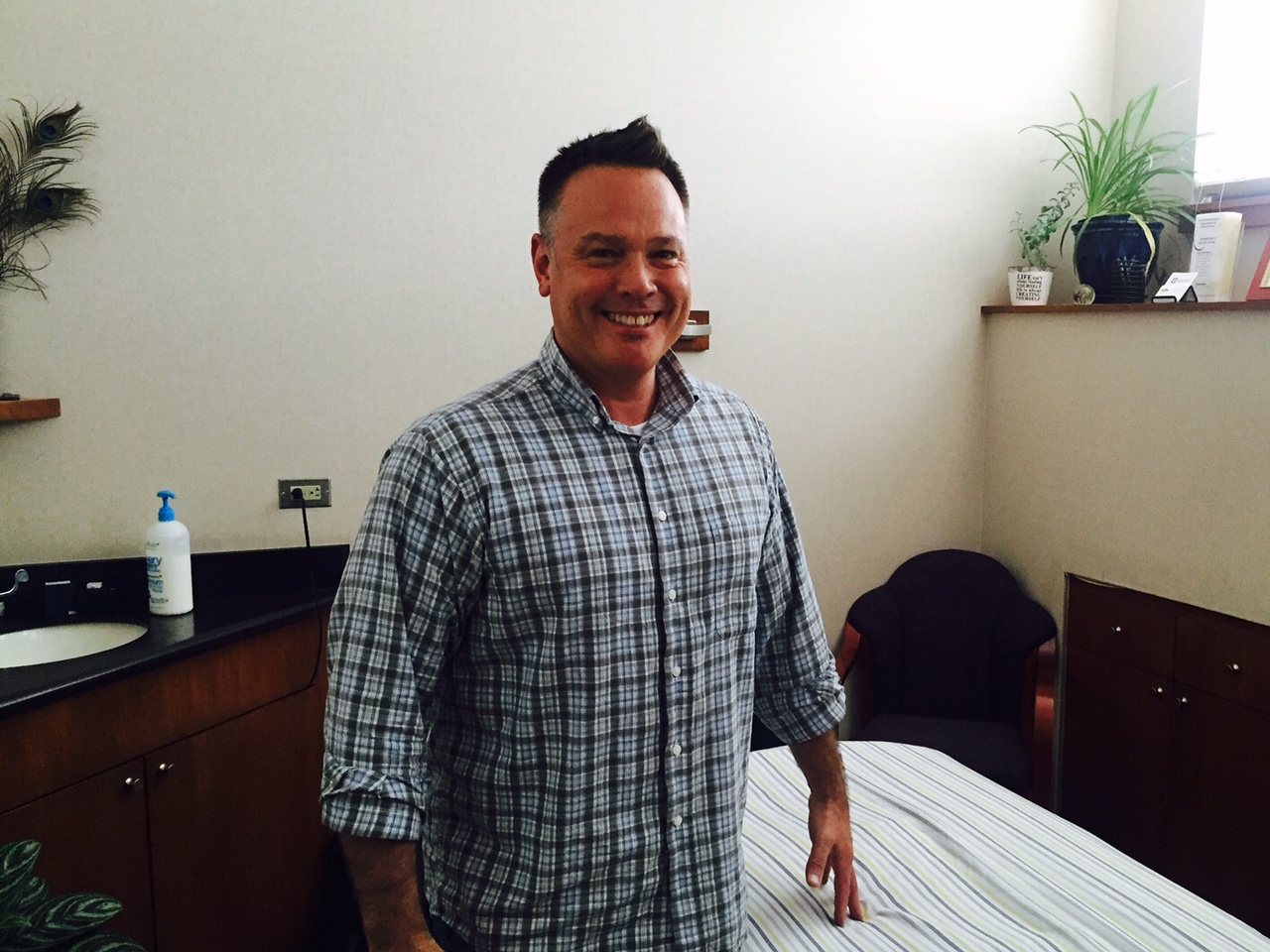Massage Away Your Fitness Pains
#withDavida
Signs of aging reared its ugly head several years ago. A sway back and unbalanced sitting habits wore my body unevenly and regular high impact activity finally started showing its effects. Not good for an active person and especially not good for a person working in the fitness field.
The aches and pains started in my hip and escalated to my back. Ibuprofen helped but didn’t seem like a good daily habit. Stretching and rolling on a foam roller felt good. But it wasn’t until I found Gus did I really start to experience the relief I needed.
Gustave Boisits is a Structural Integration & Advanced Massage Therapist. He does more than give a massage. With his advanced training and years of experience he’s able to identify misalignment in the body and work magic to smooth out the kinks.
Initially, a massage evokes an involuntary relaxation response of the nervous system. It slows your breathing rate, decreases your stress hormones and allows your blood pressure to go down. Then applied pressure works out tension or misalignment and causes a mechanical response that increases blood and lymph circulation and relaxes nerves and connective tissues.

Massage Can Make a Difference!
Gus says a good massage goes hand in hand with working out.
He sees it everyday during football season as the Structural Integration Therapist for the Denver Broncos. Gus says he often works on the players before and after a practice or a game. The athletes are checked before playing for any misalignments in body or muscle. By correcting it, their bodies can perform at their peak. Gus says a body performing at its peak can better avoid injury.
After practice or a game a massage or structural realignment allows the body to recover more quickly. But Gus says if something is wrong it’s best to have it worked on right away.
“I’ve seen in 24 hours someone first looking like they’re no going to play (after being injured) to feeling better.”
Gus will identify imbalances in the body or knots in the connective tissues and work to untwist the fascia. When there is a kink in the fascia there is a glitch in the body’s communication with the brain and the response can be tension and spasm. Gus says on a weekly basis he’s able help clients reset their pain threshold by dropping the tension in their body so the brain doesn’t recognize it as pain. This includes non-athletes too, people sitting at computers or driving a lot. Or like me having structural issues and wearing the body unevenly. Countless times I’ve limped into his office to receive a massage and woke up the next morning feeling great.
Gus says for anyone who works out hard this type of bodywork will help flush out the lactic acid and other toxins while increasing circulation to aid muscle recovery. But he agrees almost everyone can benefit from a regular massage from any massage therapist.
How do you know if a body massage will help you stay healthy?
- Gus recommends to first try getting a massage once every three months.
- Within a week review how you feel.
- If you work out regularly you might try increasing your massage time to every two to four weeks.
- Then listen to your body and let it tell you if it’s time to go have your kinks worked out sooner.
It’s a good idea to first talk to your health care provider about getting a massage.
Resources:
http://www.mayoclinic.org/healthy-lifestyle/stress-management/in-depth/massage/art-20045743
https://www.amtamassage.org/articles/1/News/detail/2915











